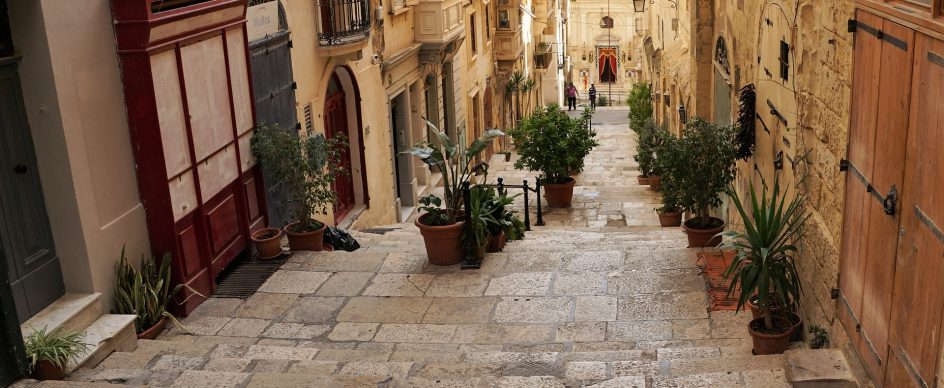
Streets Of Valletta
- Feb 17, 2018
The streets of Valletta form a grid-like layout making it very easy to explore...
Valletta’s streets are very pedestrian-friendly, making Valletta a great city for exploring on foot. Anyone that’s visited Malta before will have fond memories of the cobbled Valletta streets that feel like a step back in time. The streets are all straight, some of them small and narrow; and some of them wide and long, spanning across the majestic capital city. Clearly these streets were not designed for cars. This lack of vehicle access is no accident, and in fact, there is some military history behind the design of Valletta’s streets.
History Behind Valletta’s Streets
Although the side roads and residential areas are small and narrow, the city centre streets’, which are where many of the landmarks and tourist attractions can be found in Valletta, are set out in a grid layout. This makes it very easy to navigate and pop from one attraction to the other, and the Valletta Commonwealth Walkway helps to highlight 20 points of interest. Some say that the grid of streets was designed not for ease of movement for pedestrians, but to allow the sea breeze to flow through to keep citizens cool during Malta’s hot summer months. The grid system is also believed to have helped to introduce the water and sanitation systems. One benefit of having “square” streets is the open spaces that this layout creates; known as piazzas. The piazzas of Valletta are generally where anything of interest happens, a street theatre or show for example, and they are simply great for al fresco dining!
Piazzas In Valletta
Republic Square is one of the most photographed piazzas in Valletta. It is home to the National Library of Malta, and is filled with open-air cafés, shopping, and part of the Grandmaster’s Palace. Outside of the library is a statue of Queen Victoria, which meant the square was renamed Piazza Regina. The pigeons are rather fond of the statue and will congregate in the piazza too, perhaps visiting from their usual home in London’s Trafalgar Square?!
St John’s Square, home to St John’s Co Cathedral, is one of the more greener spaces in Valletta amongst the sandstone buildings. St George’s Square is a popular tourist attraction too, as it’s where the Changing of the Guards military display takes place each month.
Valletta’s Military Fortifications
Aside from the grid streets, Valletta has many examples of fortification, dating back to the 16th Century. At this time Francesco Laparelli, a military engineer, was drafted in to design new defences for the city. A part of this defence system was to create very steep streets with deep steps that would make it very difficult for attacking soldiers to climb with their heavy armoury. The steep streets were protected by a series of defensive walls and forts, which can still be seen today; Fort Saint Elmo being the most well-known.
Strait Street – Valletta’s Most Famous Street
Every major city has its own popular and well-known streets. In London it’s Oxford Street, in Paris it’s Champs-Élysées; and in Malta, it’s Strait Street. Strait Street, known as Strada Stretta to the locals, has even had its own TV show. Strait Street is famous for its nightlife and debauchery, mainly from the 19th Century when the American and British Military would visit in large groups to forget about their day jobs. Strait Street today is just as lively, as it was back then. In fact in the past few years, Strait Street has been revived with plenty of newly opened bars, restaurants and live music.
With Valletta being Capital of Culture in 2018, there are many outdoor events happening throughout this year in Valletta’s famous streets; just ask for our local knowledge at Casa Ellul Valletta Boutique Hotel – we’ll be happy to make you aware of what’s on!




